Color Column: Yellow
What does yellow represent?

The primary color yellow is a symbol for empowerment. It commonly represents sunshine, happiness and hope in most Western cultures. Along with warmth and happiness, yellow can also be representative of cowardliness and deceitfulness. Additionally, yellow is the color of both the mind and intellect. Studies show that yellow resonates with the left or logic side of the brain. Meaning that it stimulates our mental faculties and creates mental agility and perception.
On the light spectrum
Yellow is the brightest color of the visible spectrum with a wavelength of 575-585 nm. With that said, yellow is the most noticeable of all colors by the human eye.
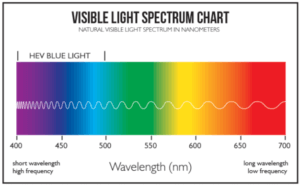
Yellow is the color between orange and green on the spectrum of visible light.
History
The word yellow originates from the Old English word geolu, meaning yellow or yellowish. Historically, the yellow sun is one of humanity’s most significant symbols and is worshiped as God in many cultures. In China, the color yellow is assigned to the active and creative male Yang principle. While ancient Egyptians ascribed yellow to the female principle.
Where do yellow pigments originate from?
Yellow Ochre
The oldest yellow pigment is yellow ochre. It is amongst the first pigments ever used by humans in 20 0000 BCE. The main color producing component is limonite, containing many iron minerals. Ochre does not stand alone, it belongs to a family of other rich earth pigments, including, red ochre, purple ochre, sienna and umber. Ochre art can be found in cave paintings over 17,000 years old in South Africa, Mongolia, China and Mexico to name a few.
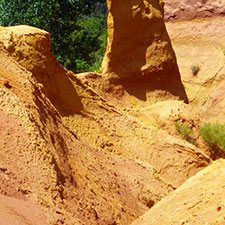
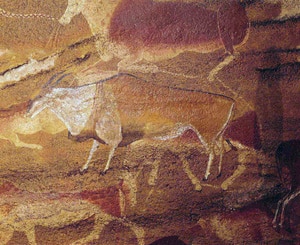
Orpiment
Egyptians and the ancient world made wide use of the mineral, orpiment for a more rich yellow. Orpiment is yellow arsenic sulphide (formula As2S3), that has been used since 3100 BCE. Despite its popular qualities, it seems to have had little known use in Northern Europe. Instead Europeans manufactured lead tin yellow in the Middle Ages and later imported the Indian yellow pigment. They eventually rediscovered the method for the production of Naples yellow, which was used by the Egyptians.
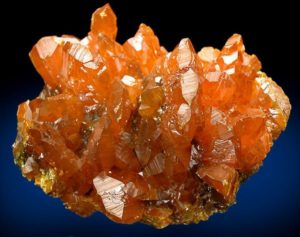
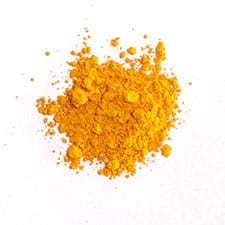
Indian Yellow
Indian yellow was also used throughout Europe from the 17th century. These pigments originate predominately from the urine of cows, which were fed exclusively on mango leaves. However, in the early 19th century this method was banned in England, due to the harmful effects this diet had on the animals. Today, Indian yellow is known as ‘azo yellow light’ and ‘azo yellow deep’. Unlike the original pigment, Indian yellow is a synthetic mixture to which is significantly less likely to discolor when exposed to light.
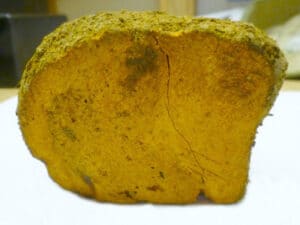
Yellow Studies
Jane Blundell, a professional painter, painted a watercolor palette of yellow hues comparing a full range of yellow. She states that the range of cool yellow colors include many lemon yellows, cadmium light, hansa light and so on. Cool yellows lean towards green and have no apparent red in them, meaning that when they are mixed together with a cool blues or neutral greens it produces very bright greens (Source: Jane Blundellart Watercolor Comparison).
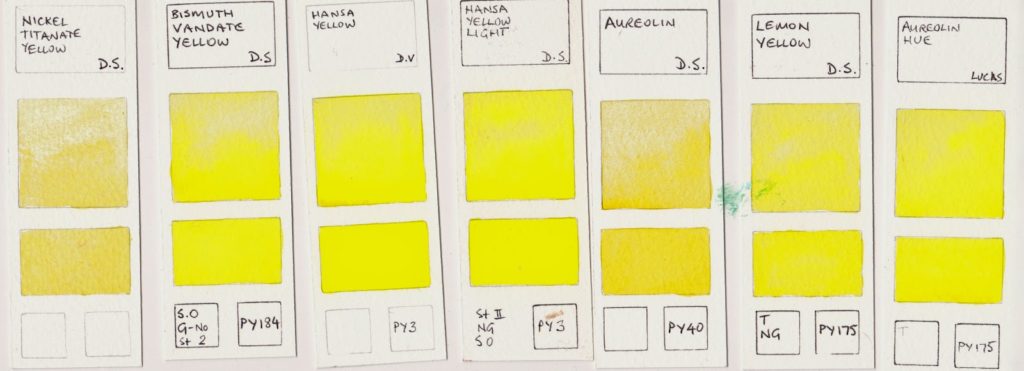
In contrast, the warmer yellows lean towards orange hues. This includes, isoindoline yellow, indian yellows, cadmium yellow and so on. She states that a mixture of warm yellows and blues or phthalo green, produces an olive-green color. This is due to the neutralizing red in them (Source: Jane Blundellart Watercolor Comparison).
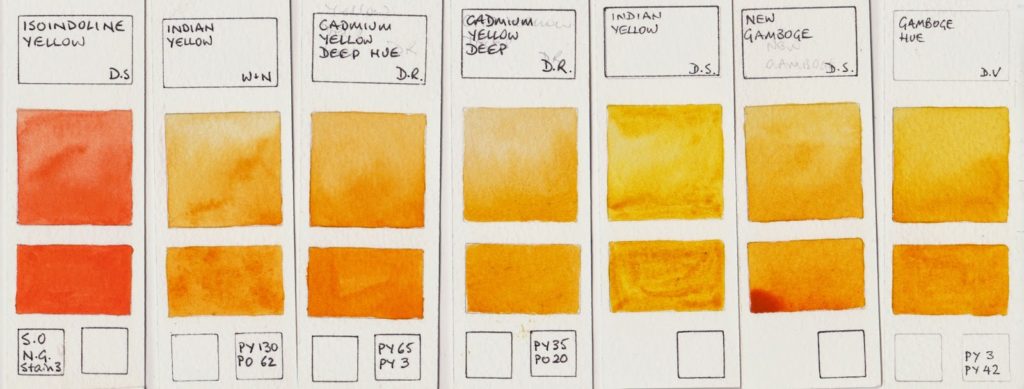
Coming Soon
Stay tuned to explore a world of yellow design and inspiration. (Click here to read now)
Now share your color themed pictures with us to feature on our future Color Column posts! Tag us on @nixsensor and use #nixplore #nixcolorcolumn on your pictures.
Find us on social media: [wp-svg-icons icon=”facebook-2″ wrap=”h1″] [wp-svg-icons icon=”instagram” wrap=”h1″] [wp-svg-icons icon=”twitter-2″ wrap=”h1″]